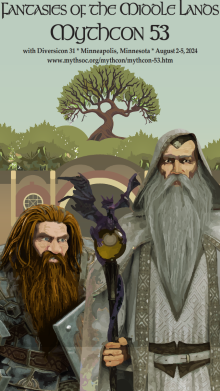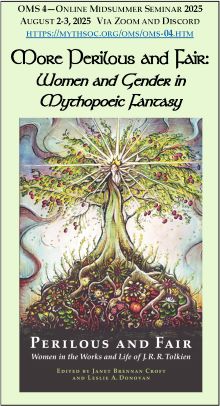Loading...
Location
Minneapolis, Minnesota
Document Type
Presentation
Event Website
https://www.mythsoc.org/mythcon/mythcon-53.htm
Start Date
2-8-2024 4:30 PM
End Date
2-8-2024 5:20 PM
Description
In this essay I explore Brian Attebery’s description of mitochondrial fantasy to explain how humor works in Eleanor Arnason’s short fantastic fiction. Mitochondria are the energy powerhouses in cells. They are symbiotic creatures that once were separate but became an evolutionary part of a female egg cell, providing a history that can be traced to a Mitochondrial Eve. In Fantasy: How It Works, Attebery uses mitochondria metaphorically to explain how fantastic ideas evolve. Attebery describes fantastic mitochondria as “a cellular dynamo that lives within the tissues” of a story (91). He demonstrates how stories lead to retellings and elaborations that then lead to more stories. Myth, folk tale, and the tropes of fantastic fiction become a mitochondrial chain that educated readers recognize. As we interact with these tropes, moments of recognition influence decisions about what we like to read, what comforts and sustains us. Although Attebery does nor address humor, it is apparent to this writer how fantastic humor has a similar kind of mitochondrial energy that nourishes us. Humor, for many of us, is part of an effective recipe of what we like. Responding to the idea of the meme, a unit for conveying cultural ideas, Maria Nikolajeva calls fantastic tropes fantasemes (Attebery, 19). Attebery sees them as providing a story with a mitochondrial history and energy. Skilled writers create characters that are accessible to us and then tell stories where these characters are put into some kind of conflict or danger. In fantastic fiction, humorous fantasemes can be used to subvert that danger. They exist as a literary wink, wink that reduces readers’ stress and tells us that the main character will succeed in the end.
Creative Commons License

This work is licensed under a Creative Commons Attribution-NonCommercial-No Derivative Works 4.0 International License.
Included in
Eleanor Arnason’s Fantastic Mitochondrial Humor
Minneapolis, Minnesota
In this essay I explore Brian Attebery’s description of mitochondrial fantasy to explain how humor works in Eleanor Arnason’s short fantastic fiction. Mitochondria are the energy powerhouses in cells. They are symbiotic creatures that once were separate but became an evolutionary part of a female egg cell, providing a history that can be traced to a Mitochondrial Eve. In Fantasy: How It Works, Attebery uses mitochondria metaphorically to explain how fantastic ideas evolve. Attebery describes fantastic mitochondria as “a cellular dynamo that lives within the tissues” of a story (91). He demonstrates how stories lead to retellings and elaborations that then lead to more stories. Myth, folk tale, and the tropes of fantastic fiction become a mitochondrial chain that educated readers recognize. As we interact with these tropes, moments of recognition influence decisions about what we like to read, what comforts and sustains us. Although Attebery does nor address humor, it is apparent to this writer how fantastic humor has a similar kind of mitochondrial energy that nourishes us. Humor, for many of us, is part of an effective recipe of what we like. Responding to the idea of the meme, a unit for conveying cultural ideas, Maria Nikolajeva calls fantastic tropes fantasemes (Attebery, 19). Attebery sees them as providing a story with a mitochondrial history and energy. Skilled writers create characters that are accessible to us and then tell stories where these characters are put into some kind of conflict or danger. In fantastic fiction, humorous fantasemes can be used to subvert that danger. They exist as a literary wink, wink that reduces readers’ stress and tells us that the main character will succeed in the end.
https://dc.swosu.edu/mythcon/mc53/schedule/10


